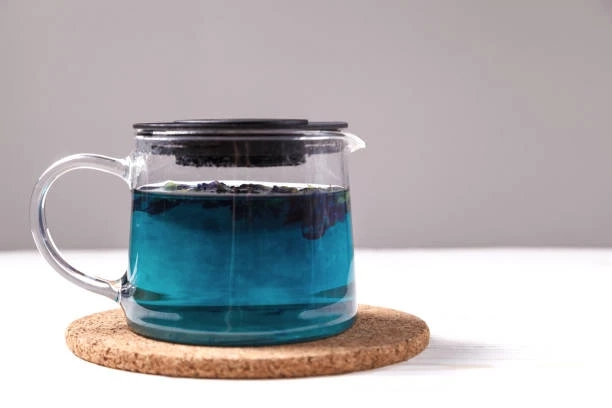Tea has been an integral part of human culture for centuries, cherished not only for its delightful flavors but also for its potential health benefits. While green tea has long reigned as the poster child of healthy beverages, a vibrant contender has emerged – blue tea. With its mesmerizing hue and a host of advantages, blue tea is gaining momentum as a worthy alternative to the well-known green counterpart. In this article, we delve into the unique qualities that set blue tea apart and explore how blue tea is better than green tea.
1. The Spectacular Visual Appeal
One can't help but be captivated by the enchanting blue hue of this exotic brew. Derived from the butterfly pea flower (Clitoria ternatea), blue tea offers a visual experience that green tea simply can't match. The natural pigments in the petals infuse the water with a deep, royal blue color, making it a feast for both the eyes and the palate. This vibrant shade not only makes for a stunning Instagram-worthy beverage but also adds an element of novelty to your daily routine.
2. Antioxidant Potency
Green tea has long been lauded for its high antioxidant content, primarily due to its rich supply of catechins. However, blue tea enters the scene with a different set of antioxidants that bring their own array of benefits. The butterfly pea flower contains anthocyanins, which contribute to the blue hue and possess powerful antioxidant properties. These compounds combat oxidative stress, bolstering the body's defense against chronic diseases and promoting overall well-being.
3. Stress-Relieving Qualities
In today's fast-paced world, stress has become a ubiquitous concern. Blue tea, with its anthocyanin content, has shown promise as a stress-relieving agent. Its ability to modulate cortisol levels, often referred to as the stress hormone, could make it a soothing choice for those seeking a moment of tranquility. Green tea, while also having stress-reducing properties, might find a competitor in the calming allure of blue tea.
4. Caffeine Consciousness
Caffeine content is a critical consideration for many tea enthusiasts. While green tea is known for its moderate caffeine content, which provides a gentle energy boost, blue tea takes a different stance. Blue tea generally contains less caffeine, making it an appealing option for those looking to limit their caffeine intake. This makes it an excellent choice for a soothing evening beverage without the risk of disrupting your sleep.
5. Culinary Creativity
While green tea has found its way into a myriad of culinary creations, blue tea opens up a world of vibrant possibilities. Its natural color can be harnessed to create visually stunning dishes, from vibrant blue smoothie bowls to captivating cocktails. The versatility of blue tea as a natural food dye encourages culinary experimentation, setting it apart from the more conventional green tea.
Conclusion
While green tea remains a staple in the world of healthy beverages, blue tea brings a breath of fresh air with its enchanting color, unique antioxidants, and stress-relieving qualities. Its lower caffeine content and culinary potential further enhance its appeal, enticing both tea connoisseurs and those seeking novel experiences. As the world becomes more health-conscious and adventurous in its choices, blue tea stands ready to carve its niche as a captivating and healthful alternative to the classic green brew.


